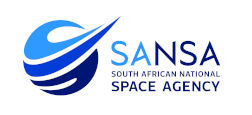Impact
- SANSA
- Impact
Since it’s inception, SANSA has built partnerships with international organisations, grown capacity and infrastructure to do world-class space science research, and started work on South Africa’s third satellite, EO-Sat1.
The Space Weather Centre at Hermanus, launched in 2011, provided critical updates and warnings for African stakeholders during the period of Solar Maximum (a regular period of greater solar activity within the 11-year solar cycle). In 2014, SANSA opened the first non-magnetic temperature chamber in southern Africa, which assists spacecraft manufacturers with improving the navigation functionality of spacecraft, for example to position a satellite in its final geosynchronous orbit around the Earth. SANSA also deployed a new high frequency (HF) radar at SANAE IV in Antarctica in 2014, as part of the global Super Dual Aurora Radar Network (SuperDARN), and recently completed the state-of-the-art Optical Space Research Laboratory (OSR) at the South African Astronomical Observatory (SAAO) in Sutherland. This facility will provide crucial space science data to meet national and international obligations, raise the standard of South African research, and improve our understanding of the Earth’s middle and upper atmosphere.
SANSA has produced a number of Earth observation and other data products for public use or for specific stakeholders.
These include an Informal Settlement Atlas, an annual country mosaic based on satellite images, a flood risk map that supports an early warning system, and a human settlements map layer that supports spatial planning and service delivery projects. The Earth Observation programme has also maintained the Online Catalogue for data discovery and dissemination.
SANSA was involved in TT&C, operations and data capture for SumbandilaSat, a weather microsatellite launched by Stellenbosch University, SunSpace and the CSIR in 2009. Despite being damaged by a solar storm in 2011, SumbandilaSat has completed over 9000 orbits, and SANSA has monitored in the region of 1300 passes. The satellite produced good quality images, some of which have contributed to the European GMES programme. Perhaps more importantly, it demonstrated capabilities important for the future of South Africa’s space programme; lessons learned during the programme are now being applied to EO-Sat1, South Africa’s first Earth observation satellite, due for launch in 2019.
Lastly, SANSA has built strong international relationships through launch support for NASA, CNES and the Indian Space Research Organisation (ISRO), among others, as well as through partnerships with organisations like Airbus Defence and Space (ADS) and Avanti Communications.


